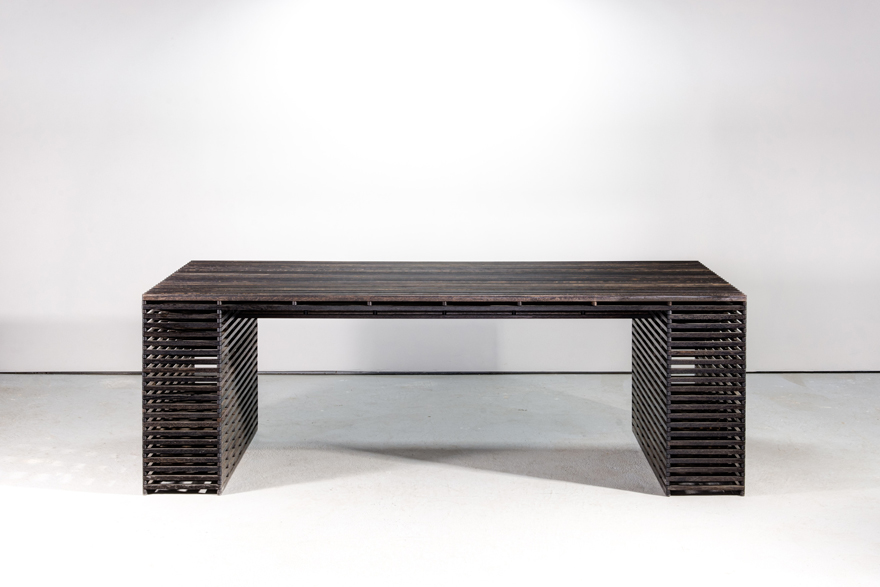
As the line between fine art and design becomes increasingly blurred, Ian Stell stands somewhere in the middle, crafting furniture that is just as much a feat of engineering as it is a work of art. I first stumbled upon the Brooklyn-based Stell when he presented a few pieces from his Pantograph Series at the Sight Unseen Offsite show during New York Design Week, and was so enraptured that I decided to dig a bit deeper in this column.
The Pantograph Series takes its name from the drawing tool, a mechanical copying device developed in 1603 for the scaling and copying of text and pictures. (Fun fact: Thomas Jefferson was known for making copies of his letters via a type of pantograph called the polygraph, which copied but didn’t enlarge the original.) Stell became interested in the device last year while completing his MFA thesis in furniture from the Rhode Island School of Design. “I found something really fascinating about it, in that the core mechanism is a hinged parallelogram that can transmit motion in a very controlled way," Stell says. “The possibilities of how that can be used are limitless."
Stell was curious if the horizontal movement of the hinged parallelogram could also be transmitted vertically—specifically, down the leg of a table. Taking a leap of faith, he began to test his theory by prototyping, and soon found himself drilling a multitude of holes into bits of wood and hinging them together with pins.
 Stell’s Big Pivot is one of three new tables that transform when pulled—in this case, from a desk or dining table (top image) to a console (above).
Stell’s Big Pivot is one of three new tables that transform when pulled—in this case, from a desk or dining table (top image) to a console (above). Big Pivot is made of more than 1,500 pieces of ebonized white oak.
Big Pivot is made of more than 1,500 pieces of ebonized white oak.
0 Comment "In the Details: Ian Stell’s Pantograph-Inspired Pivoting Tables"
Post a Comment